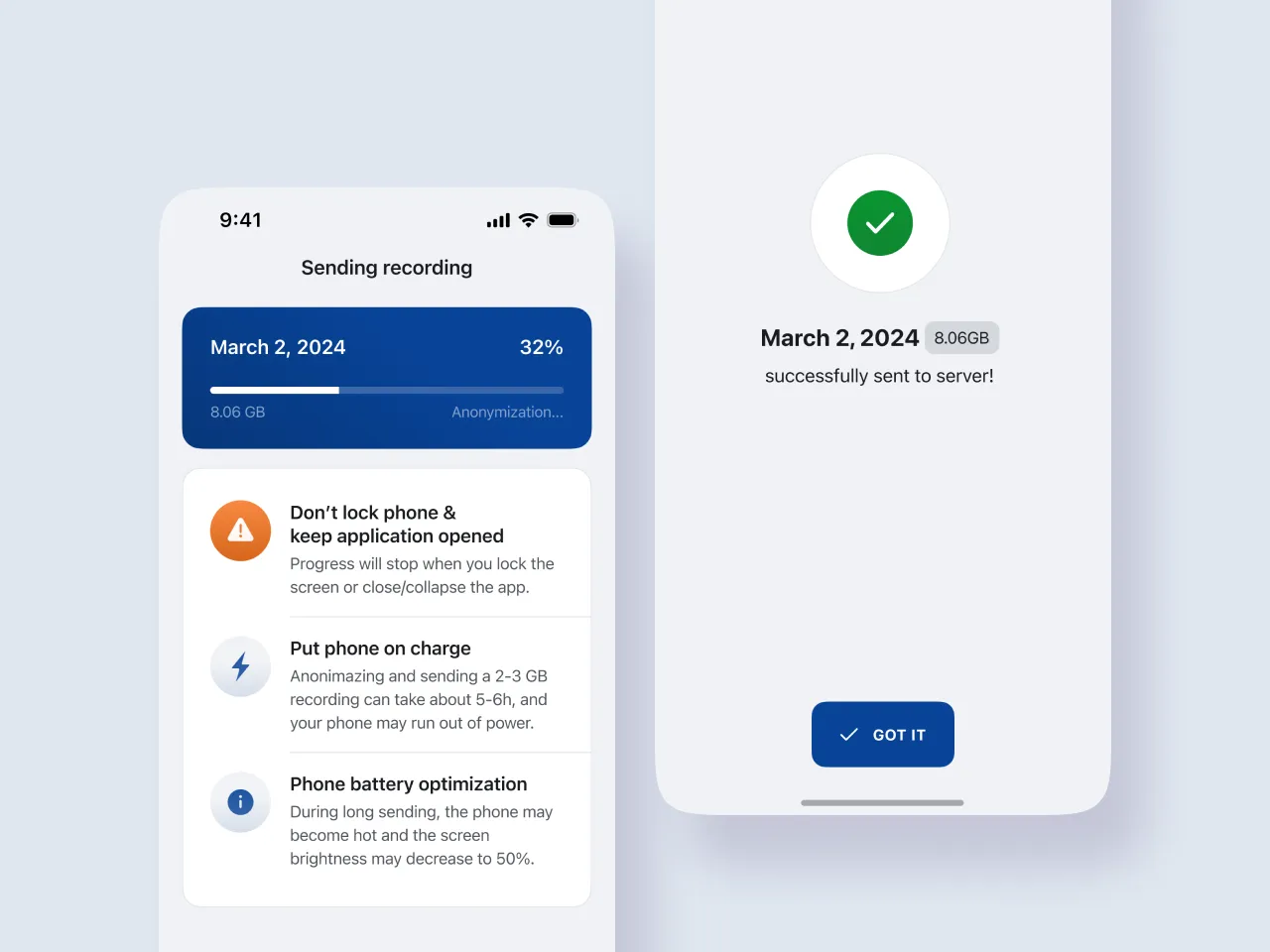Advanced AI-powered iOS Application Integrated with Innovative Health Tech Software Platform
AI-Powered SaaS Lead Acquisition Solution for the B2B Marketing Startup



We delivered a full-scale, AI-based solution to automate lead acquisition service for the client, a B2B marketing startup. This solution empowered the client to provide their customers with advanced lead outreach, qualification, and classification capabilities.
Background
As an aspiring startup providing digital marketing solutions, the client sought to improve the accuracy and reliability of lead classification procedures for its B2B customers.
Each business had to manually classify inbound leads into ‘hot’, ‘warm’, and ‘cold’ leads, which took a tremendous amount of time and effort. Depending on how much data one needs to process to perform an accurate lead classification, it might take several hours to classify a single lead.
Additionally, the more data outreach specialists had to process, the higher the risk of human error, which led to inaccuracy and unreliability in the classification procedure, in general.
The long-term consequences of the wrong lead classification included:
- Missed lead generation opportunities: If the lead was incorrectly classified, the wrong communication strategy could be chosen. For example, if the lead was ‘hot’, according to the company’s classification criteria, but marked as ‘cold’, the outreach specialist might assign the wrong priority to that lead. In this case, the lead might be contacted via email rather than messenger, leading to a slower response rate.
- Profit loss: Wrongly classified leads might not be reached in time or not contacted at all, leading to revenue loss.
- Reputational damages: By failing to provide efficient lead classification service to their customers, the client risked a poor reputation, which might cause customer churn and lost profits.
Challenge
Slow and inefficient lead processing
A typical lead generation process for the client’s customers consists of the following steps:
- Lead acquisition: They manually collected data on leads from external sources (such as CRMs and social media) and marketing campaigns they performed with the existing client base by sending them commercial proposals via email, SMS, or WhatsApp.
- Lead qualification: After a potential lead responded to the mail sent, the assigned outreach specialist (operator) qualified them as leads and added them to the CRM system.
- Lead classification: The outreach specialist started chatting with the lead. During the conversation (which might take hours or even days, depending on how quickly the lead replied to messages), they defined which group to attribute the lead to.
At that point, the main challenge for the client was the general length and inefficiency of lead processing. Each step of the procedure was handled manually. As their customers worked with leads across multiple channels, including Facebook, Instagram, WhatsApp, and email services, they had to manually classify leads acquired from each channel.
The client needed to streamline the entire process, not only its last step — lead classification — so that operators could reach out to potential leads at the right time, through the right channel, and with the right message to convert them into leads and then accurately classify them based on the pre-defined classification criteria. They needed process automation functionality to accomplish that goal.
Performance limitations
Lack of a pricing strategy to stimulate recurring profits
The client needed a consistent pricing strategy to guarantee stable, predictable profits. Initially, they distributed their solution only through the ‘pay-as-you-go’ pricing model, where the customers paid only for the number of lead acquisition campaigns they launched.
On the one hand, this model proved itself cost-efficient for the customers who didn’t intend to use the solution regularly. However, the ones who needed to use it repeatedly lacked a more flexible pricing option that would allow them to plan their budget for the solution.
Methodology & Approach
The client’s previous solution had limited performance capabilities, so modernizing it to reach all their goals was impossible from a functionality standpoint. Instead, we needed to build the new one from scratch.
We started with defining the goals for the client’s project:
- Streamline lead processing to maximize lead acquisition rates.
- Automate lead classification processes for the client based on pre-defined criteria to make classification accurate and, hence, reliable.
- Ensure the platform’s scalability to operate under increasing loads, effectively processing multiple users simultaneously. To do this, we needed to define the approximate load capacity at a given time, determine the scalability requirements, and choose a suitable performance solution.
- Provide a recurring subscription payment plan for the solution. Here, the goal was to define the client’s business model with the new solution or suggest one for them. Then, we could decide whether to leave the already existing ‘pay-as-you-go’ model and add another one (or more) or replace the existing payment model with the new one(s).
Solution
We empowered the client to run efficient lead acquisition campaigns by making the entire lead acquisition process — through potential leads’ outreach, qualification, and classification — automated, error-free, and hence efficient and reliable. Our team achieved this with an intelligent lead acquisition platform that introduced the following features and solutions:
Meta integration
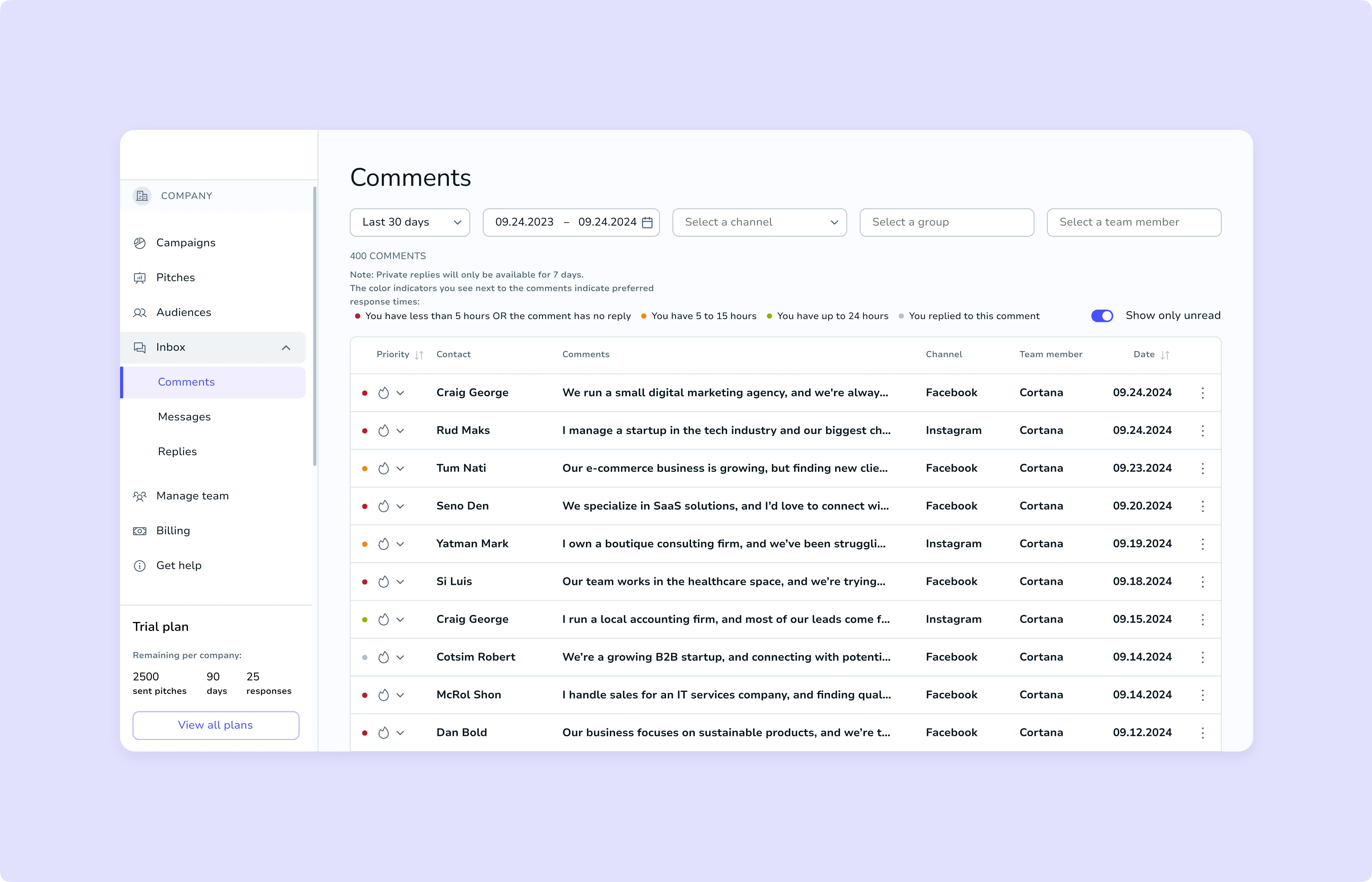
ML-powered service integration
Gmail & Outlook integration
Dedicated Zapier app
Twilio integration
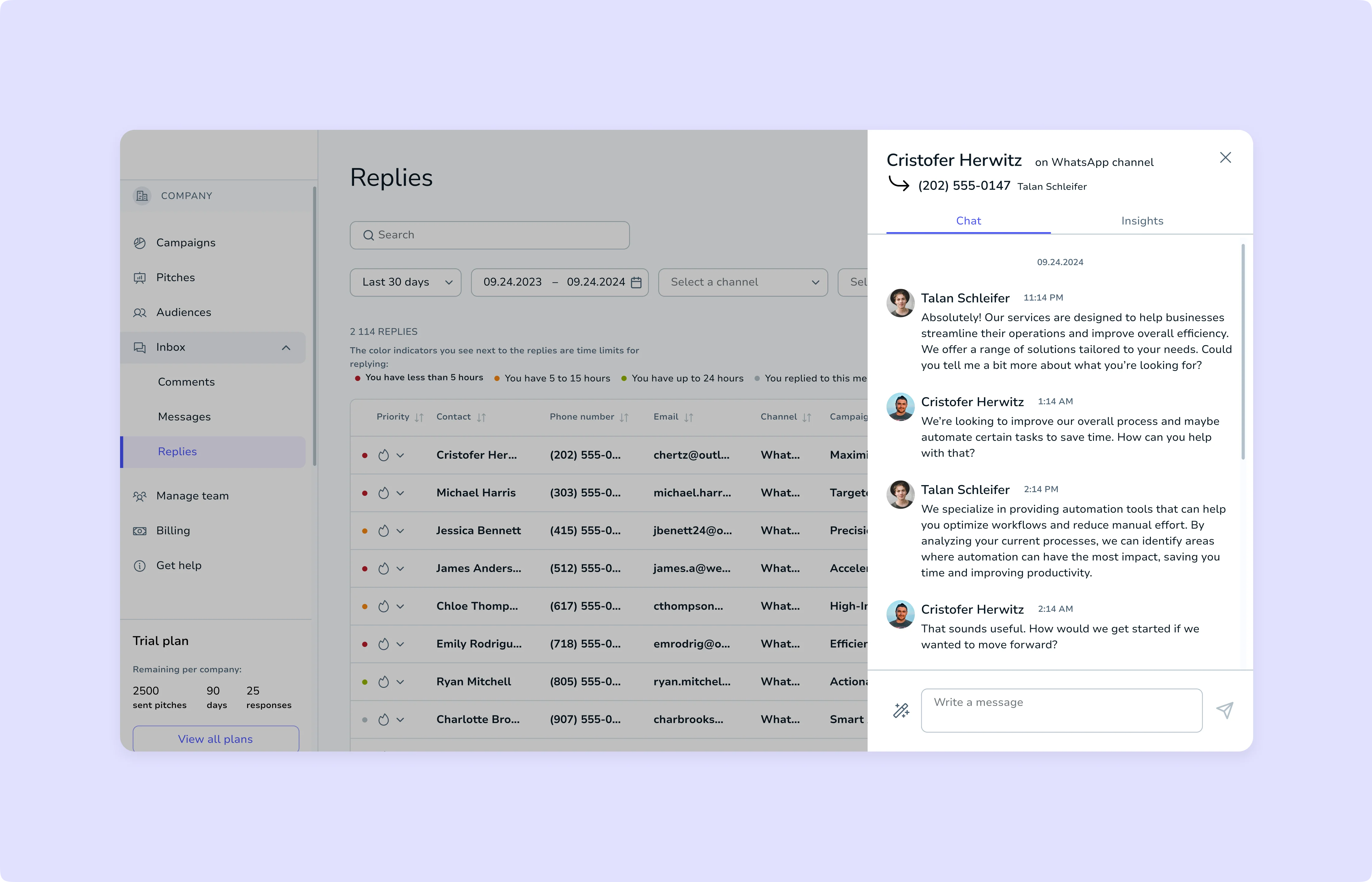
Real-time communication tool
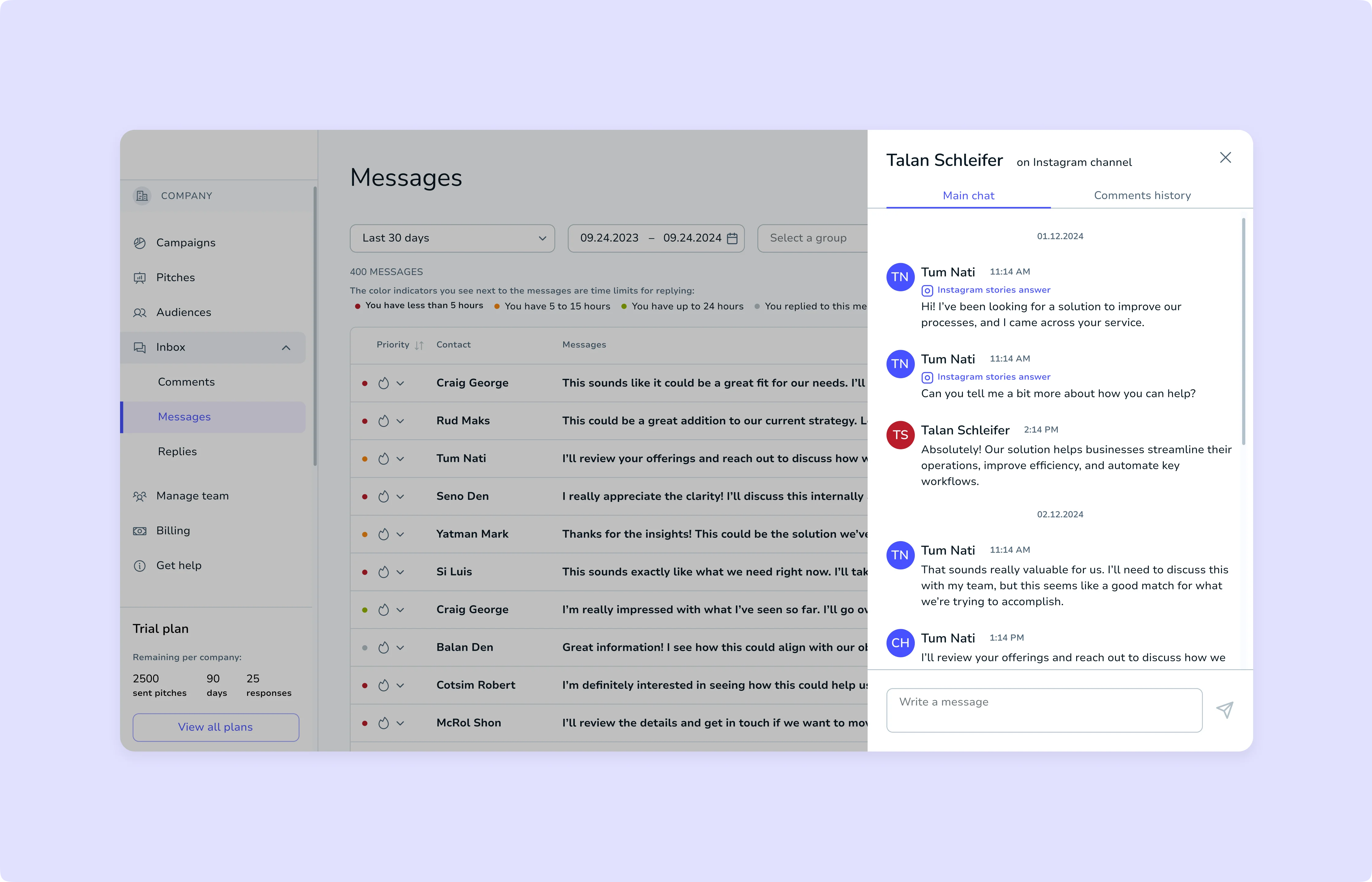
SaaS distribution model
Technology Stack
Project Results
With the delivered solution, the client managed to achieve the following results:
Enhanced productivity of lead acquisition campaigns: We automated lead processing end-to-end so that the client’s customers could retrieve meaningful data on prospects from the relevant outreach channels, accurately classify them based on the initially established classification criteria, and conduct targeted promotions among them, which increased sales rates.
Sustainable business model: With the two major payment models—‘pay as you go’ and the monthly subscription—the client could provide customers with the flexibility to choose the model that best fits their budget and software usage scenario. That is, the client managed to broaden the customer base and receive stable profits.
Brand recognition: By launching the innovative lead acquisition solution to the market, the client introduced a new way of processing leads for businesses worldwide, gaining massive positive feedback.
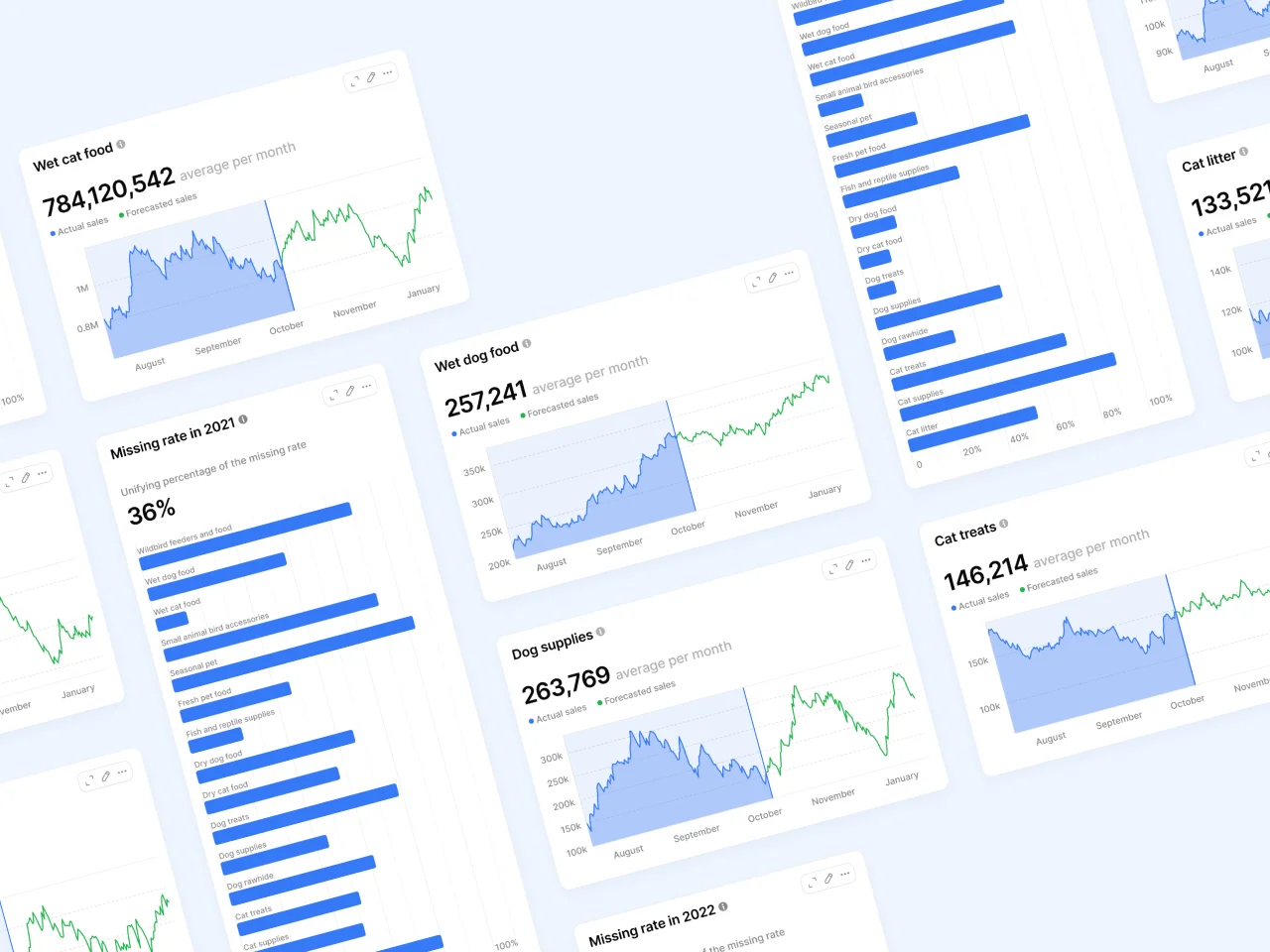
Our AI and Data Science professionals developed tailored machine learning models contributing to the improvement of sales forecasting and store layout optimization for major retail leaders in the United States.
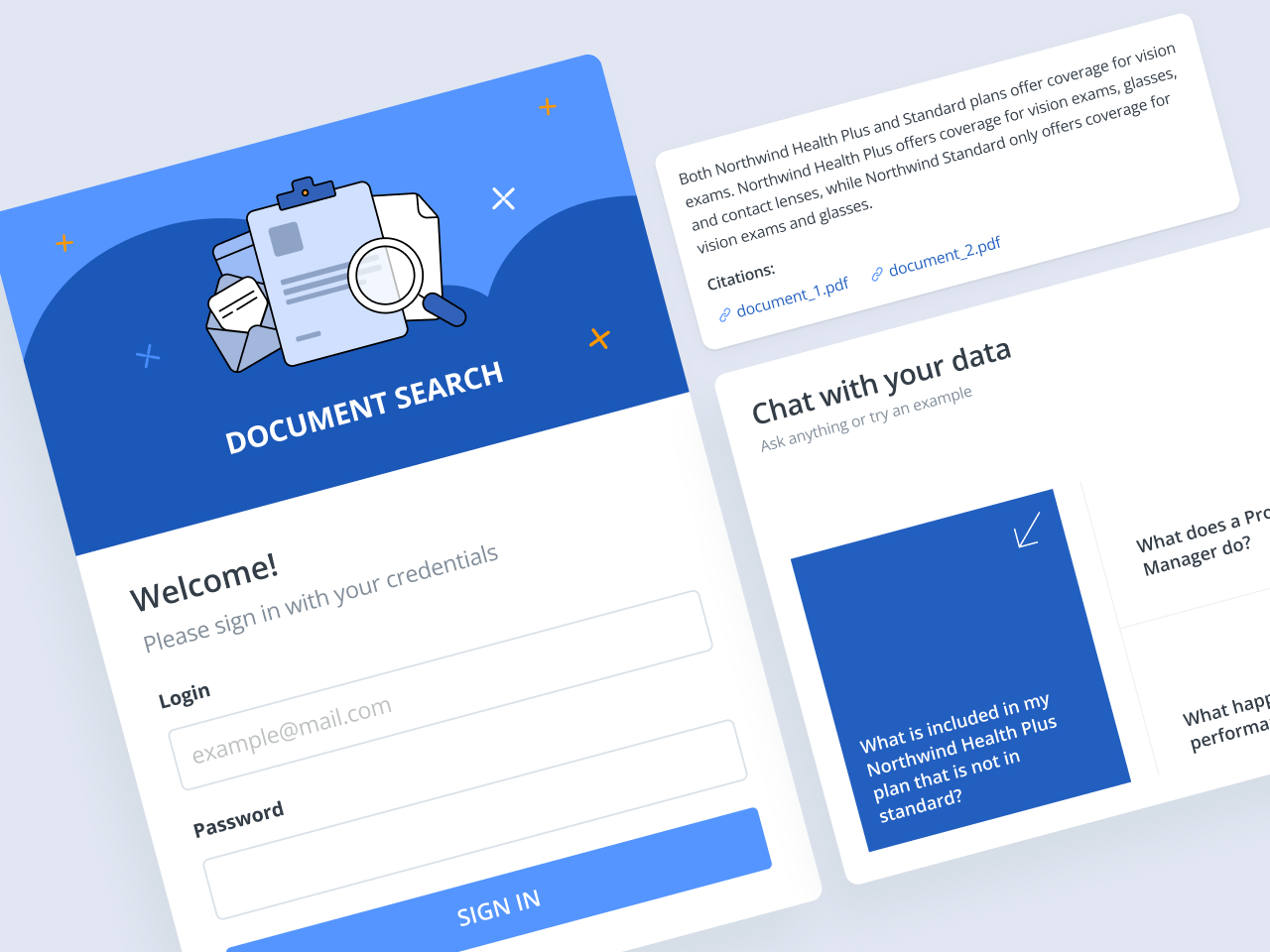
Emerline has developed an innovative AI-powered chatbot document search service tailored for B2B customers, designed to significantly enhance document management and retrieval processes in a business environment.
